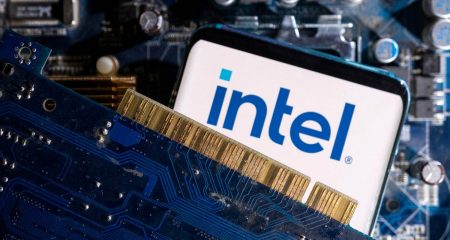 Storm clouds are brewing over the global technology industry. A host of hardware companies, including Apple, Samsung Electronics, Foxconn Technology Group and Intel, are sitting on inventory stockpiles not seen since the financial crisis a decade ago.
Storm clouds are brewing over the global technology industry. A host of hardware companies, including Apple, Samsung Electronics, Foxconn Technology Group and Intel, are sitting on inventory stockpiles not seen since the financial crisis a decade ago.
And it comes amid a possible US-China trade war; likely monetary tightening by the US Federal Reserve Bank; more expensive growth in China’s consumer economy; and a long-standing sense that we’re in a tech bubble.
I selected nine companies — a mix of branded-electronics names, product assemblers and the world’s biggest chip makers — to paint a picture of the inventory levels we’re seeing right now.
It’s not pretty.
Stockpiles escalated rapidly over the past year, with inventories surging at Apple and its chief supplier, Foxconn. Intel’s numbers are also high, while weaker revenue at Samsung is exacerbating the problem there.
Samsung is the most complicated to analyse because the company has its fingers in so much of the supply chain: it manufactures the components, assembles devices and sells under its own brand. That makes it difficult to pinpoint precisely which part of the firm’s inventories are most problematic. Yet that also means Terry Gou’s flagship is among the best examples of the industry’s end-to-end challenges.
Data on Xiaomi is incomplete — it only just listed shares in Hong Kong — yet the fact that its inventories jumped more than 30% from a year ago makes it a company to watch. HP looks to be in the healthiest position relative to others because its figures have expanded at a slower pace.
Basic inventory numbers don’t tell the whole story because rapidly expanding sales can justify building up stockpiles. But recently, revenue expansion has been falling well short of inventory growth in the electronics industry.
Widest since 2008
Another way to look at this is to consider days of inventory outstanding, or its related metric, inventory turnover, which measures how often stockpiles are churned through in a given period. Cash conversion cycle is another method, connecting inventory to operating cash flow.
The cash conversion cycle at Hon Hai Precision Industry, the Taipei-listed flagship of Foxconn, has blown out to the widest since 2008; so, too, have days of inventory outstanding. This tells us that Apple’s chief supplier is struggling to sell the stockpiles it has on hand. It’s possible that Hon Hai has been building inventory ahead of an expected boom for the next iPhone, but I’m not convinced that’s the case.
At Samsung, inventory turnover is at its lowest in eight years, exacerbated by a decline in revenue last quarter and expectations for anemic growth through the end of the year.
There’s one notable exception to this trend. Sony has exercised renewed discipline in managing its inventories, which has helped days inventory outstanding drop to a decade low. A rebound in the cash conversion cycle may indicate some inefficiency in converting those sales to cash. But with its former CFO now at the helm and the company now relying more on services — and less on hardware — this may not be as big a concern.
The rising cost to drive consumer spending among China’s Internet giants is an issue that could impact demand. That may be a major headwind for hardware makers globally. No one wants this decade-long tech party to end, but it may be wise for investors to take stock. Literally. — Reported by Tim Culpan, (c) 2018 Bloomberg LP




